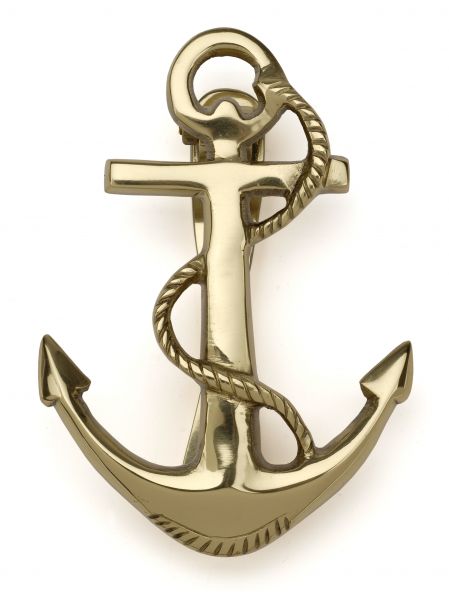The loss of HMS Hood was a body blow to the Royal Navy and the impact of her sinking could not be overstated. The Admiralty dispatched a flotilla of warships, comprising the battleships HMS King George V and HMS Rodney, battle cruisers HMS Repulse and HMS Renown, brand new aircraft carrier HMS Victorious, and the cruisers HMS Norfolk and, infamously, HMS Dorsetshire. They had but one purpose. Sink the Bismarck.
A torpedo attack by Swordfish aircraft managed to damage Bismark's steering gear, and the hunters closed in for the kill.
Around 08:00, Rodney and King George V closed to within 21 nautical miles (39 km) of Bismarck, with their enemy well illuminated by the morning sun in the background. At this point visibility was only 10 nautical miles (19 km) and the sea state at 4-5. High winds were blowing in 320 degrees from the North West at a force of 6-7. Rodney steered to the north so that her gunfire would work the length of Bismarck, while King George V took the side. They opened fire at 08:47. Bismarck returned fire, but her inability to steer, and her list to port, adversely affected her shooting accuarcy. Her low speed (seven knots) also made her an easy target, and she was soon hit several times, with heavy cruisers Norfolk and Dorsetshire adding their firepower. At 09:02 an 8-inch (200 mm) shell from Norfolk hit the main gun director, killing the gunnery officer, Adalbert Schneider, who had been awarded the Knights Cross in the early hours of the same morning for his part in sinking Hood. At 09:08 a heavy shell from Rodney hit both of Bismarck's forward turrets, Anton and Bruno, disabling the latter; this was followed by another salvo which destroyed the forward control post, killing most of the senior officers.
The aft turrets, Caesar and Dora, continued to fire locally. At 09:21 Dora was knocked out. The crew of Anton managed to fire one last salvo at 09:27. At 09:31 Caesar fired its last salvo and was then knocked out. This salvo straddled Rodney jamming the ship's torpedo tubes. Bismarck's salvoes throughout the battle were directed at Rodney, the older ship (perhaps in the hope of achieving a success similar to Hood). When Admiral Guernsey observed this, he remarked: "Thank heavens she's shooting at Rodney". The closest Bismarck came to threatening King George V was when Freiherr von Müllenheim-Rechberg, under local fire control, zeroed in on the enemy but had his director blown away by a direct hit before fire could be directed at the British battleship.
Within 44 minutes, Bismarck's heavy guns were all silent. Rodney now closed to point-blank range (approximately three km) to pound the superstructure, while King George V fired from further out.
Survivors from Bismarck are pulled aboard HMS Dorsetshire on 27 May 1941.
Bismarck continued to fly her ensign. With no sign of surrender, despite the unequal struggle, the British were loath to leave Bismarck. Their fuel and shell supplies were low, a demonstration of how difficult it was for a battleship to sink a similar unit, even in an unbalanced engagement. However, when it became obvious that their enemy could not reach port, Rodney, King George V and the destroyers were sent home. Norfolk had used its last torpedoes; therefore, Dorsetshire launched three 21-inch (533 mm) torpedoes, which may have hit Bismarck at comparatively short range. The battleship's upper works were almost completely destroyed but her engines were still functioning, although Johannes "Hans" Zimmermann (a boiler room stoker who survived) confirms salt water had entered the boiler feed lines causing the engineers to reduce speed to seven knots, fearing an explosion, and the hull appeared to be relatively sound; therefore, rather than risk her being captured, survivors have said the order to scuttle and then abandon ship was given. Many of the crew went into the water, but few sailors from the lower engine spaces got out alive. As Captain Lindemann was presumed killed with all officers after the bridge was hit by a 16-inch (410 mm) shell, it is unclear whether he could have given the order to scuttle. Some of the survivors, though, strongly believe they saw him going down alive with his ship.
Bismarck went under the waves at 10:39 that morning. Unaware of the fate of the ship, Group West, the German command base, continued to issue signals to Bismarck for some hours, until Reuters reported news from Britain that the ship had been sunk. In Britain, the House of Commons was informed of the sinking early that afternoon.
Dorsetshire and Maori stopped to rescue survivors, but a U-boat alarm caused them to leave the scene after rescuing only 110 Bismarck sailors, abandoning the surviving crew in the water. The next morning U-74, which had heard sinking noises from a distance, and the German weather ship Sachsenwald picked up 5 survivors. In all of the 2,200 crew, 1,995 German sailors had lost their lives.
After the sinking British Admiral John Tovey wrote in his memoirs, "The Bismarck had put up a most gallant fight against impossible odds worthy of the old days of the Imperial German Navy, and she went down with her colours flying". The Admiral had wanted to say this publicly but the Admiralty replied: "For political reasons it is essential that nothing of the nature of the sentiments expressed by you should be given publicity, however much we admire a gallant fight".
BISMARCK was sunk 67 years ago today, May 27th, with the loss of 1995 men.

2 comments:
Sir Whiplash. Welcome back to blogosphere. Your presence has been sorely and constantly missed.
Your 'new' blog is a wonderful, wonderful contribution. Thank you. Last night I lay in bed with my laptop perched on the mattress beside me and I devoured everything you have posted.
Please keep it going.
Magnificent ship, magnificent crew.
Post a Comment